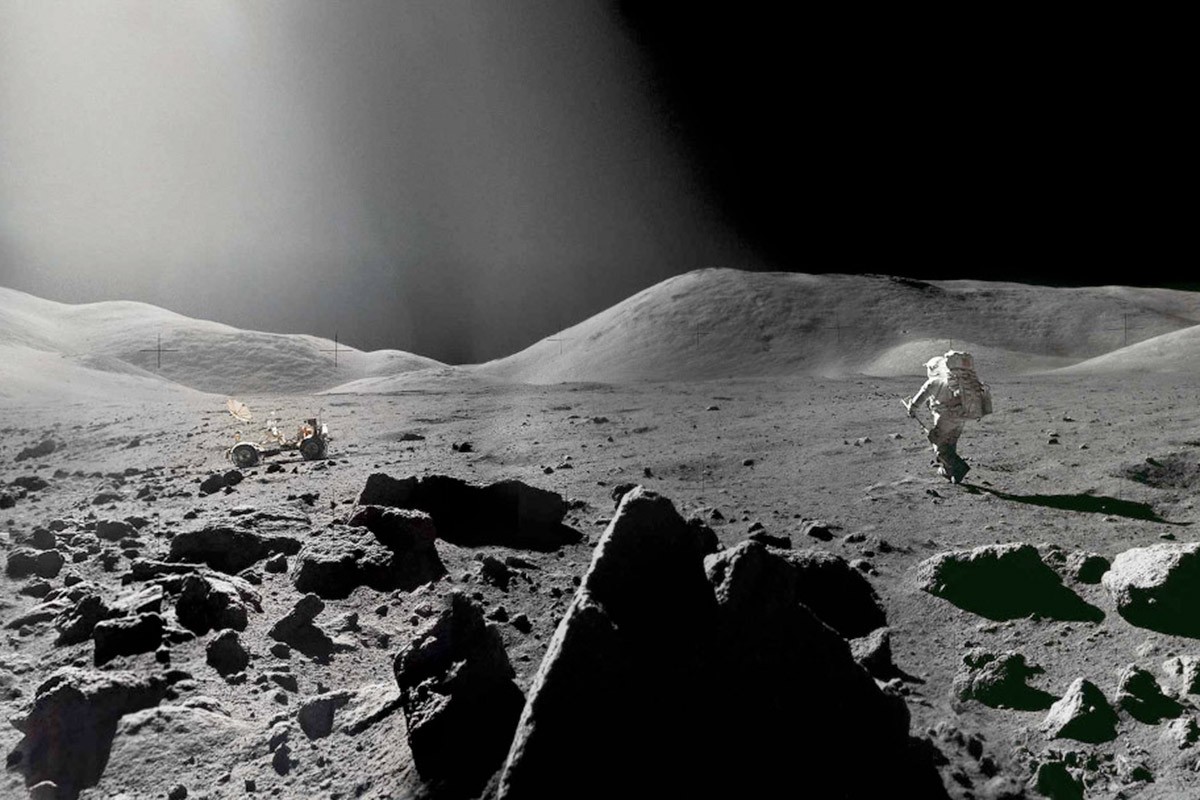Scientists confirm the existence of a cave on the moon
- July 16, 2024
- 0
Scientists have confirmed the existence of a cave on the moon near where Neil Armstrong and Buzz Aldrin landed 55 years ago, and they suspect there are hundreds
Scientists have confirmed the existence of a cave on the moon near where Neil Armstrong and Buzz Aldrin landed 55 years ago, and they suspect there are hundreds

Scientists have confirmed the existence of a cave on the moon near where Neil Armstrong and Buzz Aldrin landed 55 years ago, and they suspect there are hundreds more that could house future astronauts. An Italian-led team said Monday it has found evidence of a large cave accessible from the deepest known crater on the moon, located in the Sea of Tranquility, just 250 miles (400 kilometers) from the Apollo 11 landing site.
The pit, like more than 200 others found there, was formed by the collapse of a lava tube. The researchers analyzed radar measurements from NASA’s Lunar Reconnaissance Orbiter and compared the results to lava tubes on Earth. Their findings were published in the journal Nature Astronomy.
The radar data reveals only the beginning of the underground cavity, scientists say, which they estimate is at least 130 feet (40 meters) wide and dozens of yards (meters) long, possibly more.
“The Moon Caves have remained a mystery for over 50 years. So it was exciting to finally be able to prove the existence of one,” Leonardo Carrer and Lorenzo Bruzzone of the University of Trento wrote in an email.
Many of the craters appear to be located in the moon’s ancient lava plains, according to scientists. Some may also be at the moon’s south pole, where NASA astronauts are scheduled to land within the next decade. The permanently shadowed craters are thought to contain frozen water that could provide drinking water and rocket fuel.
During NASA’s Apollo program, 12 astronauts landed on the moon, starting with Armstrong and Aldrin on July 20, 1969.
The findings suggest there could be hundreds of pits and thousands of lava tubes on the moon. Such places could serve as natural shelters for astronauts, protecting them from cosmic rays and solar radiation, as well as the impacts of micrometeorites. Building the habitats from scratch would be more time-consuming and difficult, even considering the need to reinforce the cave walls to prevent them from collapsing, the team said.
The rocks and other materials inside these caves, untouched by harsh surface conditions over the ages, could help scientists better understand how the Moon has evolved, especially in terms of volcanic activity.
Source: Port Altele
As an experienced journalist and author, Mary has been reporting on the latest news and trends for over 5 years. With a passion for uncovering the stories behind the headlines, Mary has earned a reputation as a trusted voice in the world of journalism. Her writing style is insightful, engaging and thought-provoking, as she takes a deep dive into the most pressing issues of our time.